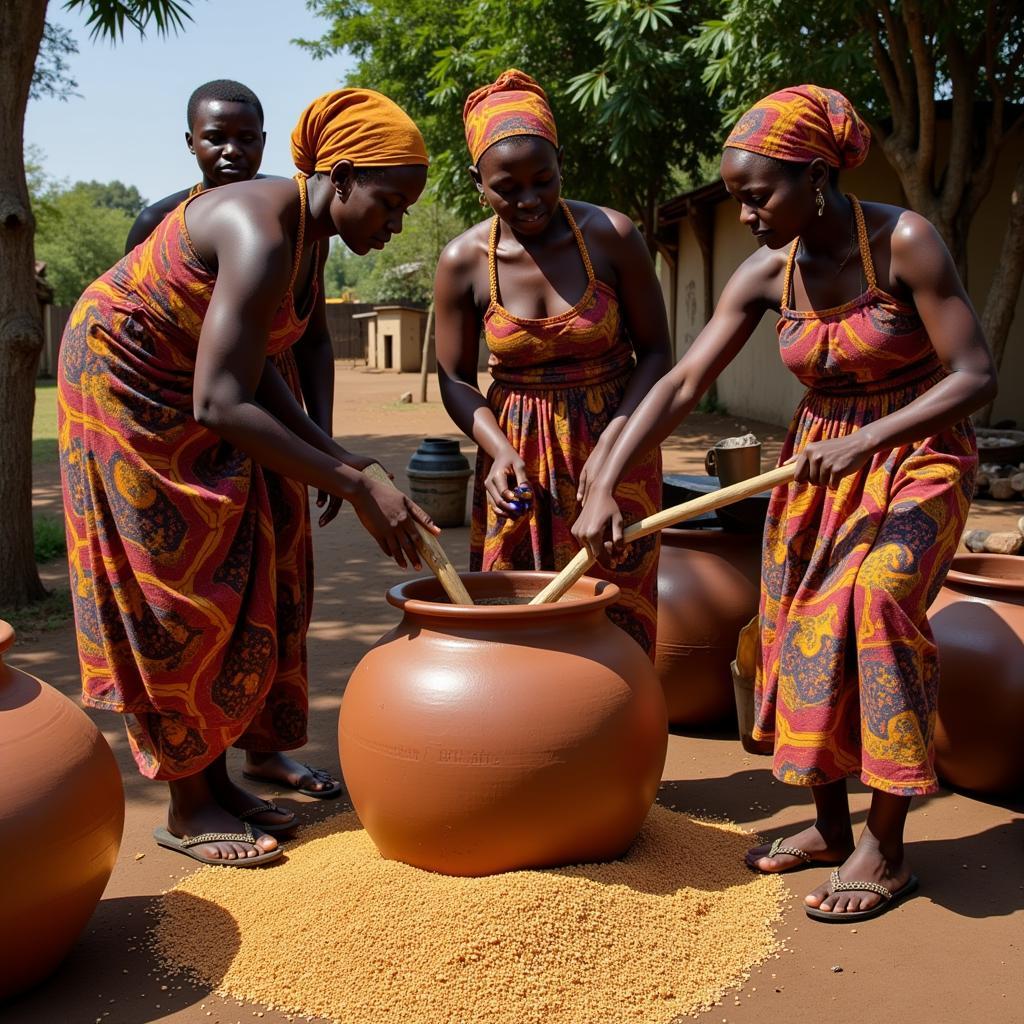Where Are African Diamonds Recovered From?
African Diamonds Are Recovered From a variety of sources, both primary and secondary. The journey of these precious stones from deep within the earth to the hands of a jeweler is a fascinating one, filled with geological wonders, mining ingenuity, and the pursuit of breathtaking beauty.
Unveiling the Origins: Primary Sources of African Diamonds
Primary sources, also known as primary deposits, are where diamonds are found in their original volcanic rock, known as kimberlite. These deposits are formed over millions, even billions, of years, deep within the earth’s mantle under intense heat and pressure.
The most significant primary source of African diamonds is the kimberlite pipes of Southern Africa. Botswana, famed for its high-quality diamonds, is home to the prolific Jwaneng mine, one of the richest diamond mines in the world. South Africa boasts the historic Kimberley mine, also known as the Big Hole, which sparked the first diamond rush in the late 19th century.
Other African nations, including Namibia, Angola, and the Democratic Republic of Congo, also possess significant kimberlite deposits, contributing to the continent’s global diamond production. These primary sources, often located in remote and challenging terrains, require sophisticated exploration and mining techniques to unearth the hidden treasures within.
Tracing the Journey: Secondary Deposits of African Diamonds
Secondary sources, also known as alluvial deposits, are formed through the erosion and transportation of diamonds from their primary kimberlite sources. Over time, weathering and the forces of nature liberate diamonds from the volcanic rock, carrying them downstream by rivers or ocean currents.
These diamonds then settle in riverbeds, floodplains, and coastal areas, forming alluvial deposits. Namibia, for instance, is renowned for its alluvial diamond deposits along the Atlantic coast, where diamonds are mined from the ocean floor using specialized marine mining techniques.
Alluvial mining, often less capital intensive than primary mining, is prevalent in various African countries, including Sierra Leone, Guinea, and the Central African Republic. These secondary sources offer a different set of challenges and rewards for diamond seekers.
The Human Element: From Mine to Market
The recovery of African diamonds involves a complex interplay of geological processes, mining expertise, and global market forces. From the initial exploration and assessment of potential diamond-bearing areas to the intricate processes of extraction and processing, the journey of an African diamond is a testament to human ingenuity and the allure of these precious stones.
Skilled geologists, mining engineers, and technicians work tirelessly to locate, extract, and transform rough diamonds into the polished gems that adorn jewelry worldwide. This labor-intensive process, often taking place in remote and demanding environments, highlights the dedication and skill required to bring African diamonds to the world stage.
Conclusion: African Diamonds – A Legacy of Beauty and Value
From the depths of ancient volcanoes to the sands of time-worn riverbeds, the recovery of African diamonds is a captivating story. Whether sourced from primary kimberlite pipes or secondary alluvial deposits, these diamonds represent a legacy of natural wonder and human endeavor. Understanding the origins and recovery processes of African diamonds provides a deeper appreciation for their beauty, rarity, and the enduring fascination they inspire.
If you need assistance, please contact us at Phone Number: +255768904061, Email: kaka.mag@gmail.com or visit our address: Mbarali DC Mawindi, Kangaga, Tanzania. We have a 24/7 customer support team.



